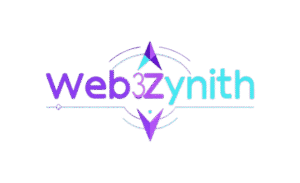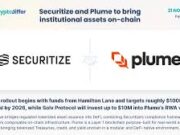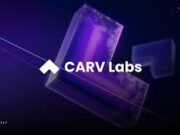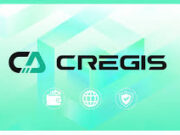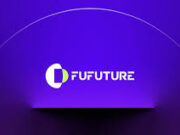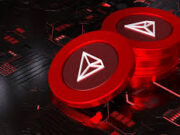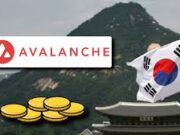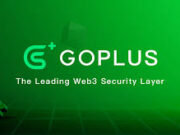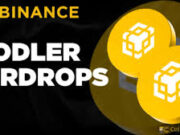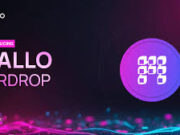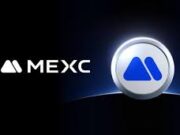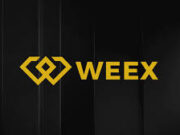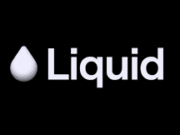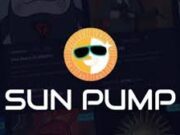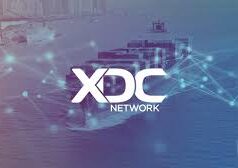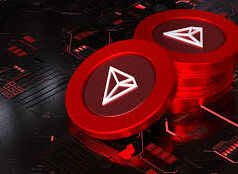Introduction
Ethereum remains the backbone of Web3, powering DeFi, NFTs, and gaming dApps, but its scalability limitations—high gas fees and slow transaction speeds—have long been a hurdle. Enter Layer-2 (L2) scaling solutions, which process transactions off-chain while leveraging Ethereum’s security, slashing costs and boosting speed. In 2025, L2 networks like Arbitrum, Optimism, and zk-Rollups are driving innovation, making Web3 more accessible for developers and users. From DeFi platforms like Uniswap to gaming-focused blockchains like W3Gamez Network, L2s are transforming how dApps scale. This post explores the latest advancements in L2 technology, compares their performance metrics (transaction speed and costs), and highlights their impact on the Web3 ecosystem. Let’s see how these solutions are shaping the future of decentralized applications and why they’re critical for mass adoption.
Section 1: Why Layer-2 Solutions Matter
Scalability is the key to unlocking Web3’s potential. Ethereum’s mainnet, limited to ~15-30 transactions per second (TPS), struggles with congestion and high gas fees, often exceeding $10 per transaction during peak times. Layer-2 solutions address this by processing transactions off-chain and settling them on Ethereum, reducing costs and increasing throughput without compromising security.
Two main L2 approaches dominate: Optimistic Rollups (e.g., Arbitrum, Optimism) and Zero-Knowledge Rollups (zk-Rollups) (e.g., zkSync, StarkNet). Optimistic Rollups assume transactions are valid, using fraud proofs for disputes, while zk-Rollups use cryptographic proofs for instant validation, prioritizing speed and privacy. In 2024, L2s processed over 2.8 million daily transactions, surpassing Ethereum’s mainnet by 2.5x, with total value locked (TVL) exceeding $38.3 billion. These advancements enable dApps to handle high-frequency interactions, making Web3 viable for gaming, DeFi, and social platforms. As Ethereum evolves with upgrades like Dencun, L2s are poised to be the cornerstone of its scalability strategy.
Section 2: Comparing Layer-2 Solutions: Performance Metrics
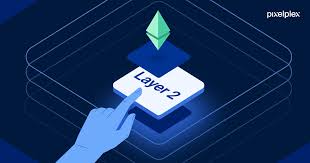
Let’s break down the performance of leading L2 solutions—Arbitrum, Optimism, and zk-Rollups—focusing on transaction speed, costs, and use cases.
- Arbitrum:
- Tech: Uses Optimistic Rollups, processing transactions off-chain with a 7-day challenge period for fraud proofs.
- Performance: Handles up to 40,000 TPS, far surpassing Ethereum’s 15-30 TPS. Transaction fees average ~$0.20-$0.50, compared to Ethereum’s $1-$10.
- Ecosystem: Boasts $15.94 billion TVL (40.88% L2 market share) and supports DeFi giants like Uniswap and GMX, which processed $8 billion in trading volume. Recent upgrades like Arbitrum Nitro and Stylus (supporting Rust/C++ contracts) enhance speed and developer flexibility.
- Strengths: High EVM compatibility, low fees, and a robust DeFi ecosystem.
- Challenges: 7-day withdrawal delays due to fraud-proof periods.
- Optimism:
- Tech: Also uses Optimistic Rollups, with a focus on simplicity and EVM compatibility via the Optimistic Virtual Machine (OVM).
- Performance: Processes ~2,000 TPS with fees as low as $0.10 after Ethereum’s Dencun upgrade. Handles 80% of L2 transactions, securing $22 billion in assets.
- Ecosystem: Powers dApps like Synthetix and Lyra, with the OP Stack enabling custom chains like Base (Coinbase’s L2).
- Strengths: Developer-friendly, with seamless dApp migration and a growing Superchain ecosystem.
- Challenges: Similar withdrawal delays as Arbitrum; slightly lower TPS than Arbitrum.
- zk-Rollups (e.g., zkSync, Loopring):
- Tech: Uses zero-knowledge proofs for instant transaction finality and enhanced privacy.
- Performance: zkSync achieves validation times under 10 seconds and up to 2,000 TPS, with fees as low as $0.01-$0.05. Loopring supports 2,000 TPS for DEXs, costing ~1/100th of Ethereum’s fees.
- Ecosystem: zkSync Era powers DeFi and gaming, while Immutable X focuses on gas-free NFT minting.
- Strengths: Faster finality, stronger security, and privacy features.
- Challenges: Complex implementation limits EVM compatibility, though zkEVMs (e.g., Astar zkEVM) are closing the gap.
Comparison Summary: Arbitrum leads in TVL and TPS, ideal for DeFi. Optimism excels in developer ease and ecosystem growth. zk-Rollups shine for speed and privacy but lag in adoption due to complexity. For cost-sensitive dApps, zk-Rollups offer the lowest fees, while Optimistic Rollups dominate market share (59% of L2 activity).
Section 3: Niche Applications – W3Gamez Network and Beyond (200-250 words)
L2 solutions aren’t just about DeFi—they’re enabling niche applications like gaming. W3Gamez Network, built on Optimism’s OP Stack and integrated with NEAR Protocol, is a prime example. It leverages Optimistic Rollups for low-cost, high-speed transactions tailored for Web3 gaming, addressing issues like in-game asset trading and cheating (e.g., bots in games like Pixels). By processing transactions off-chain, W3Gamez reduces latency and fees, creating seamless play-to-earn experiences. Its integration with NEAR adds cross-chain interoperability, letting gamers move assets across ecosystems.
Other niche L2s include:
- Immutable X: Uses zk-Rollups for gas-free NFT minting, powering marketplaces and games with instant trades.
- Arbitrum Nova: Optimized for gaming and social dApps, processing 15 million transactions monthly. These specialized chains show L2s moving beyond general-purpose scaling to support specific industries. For gamers, L2s mean faster, cheaper in-game economies; for developers, they offer customizable frameworks like OP Stack or Arbitrum Orbit for building tailored chains. As Web3 gaming grows, projects like W3Gamez highlight how L2s enable scalable, user-centric applications, driving adoption in niche markets.
Section 4: Impact on dApps and Web3 Adoption
L2 solutions are revolutionizing dApps by enabling high-throughput, low-cost interactions. DeFi platforms like Uniswap on Arbitrum save users up to 95% on gas fees, processing transactions 10x faster than Ethereum’s mainnet. Gaming dApps benefit from instant trades and asset ownership, as seen with Immutable X’s NFT marketplaces. Social platforms, like those on Arbitrum Nova, leverage L2s for microtransactions and user-owned data, challenging Web2 models.
In 2025, L2s are critical for Web3 adoption. Over 100 Fortune 500 companies have initiated L2-based projects, signaling enterprise interest. The rise of modular frameworks (e.g., OP Stack, ZK Stack) lets developers build custom L3 chains for specific use cases, enhancing user experience. However, challenges remain: Optimistic Rollups’ withdrawal delays and zk-Rollups’ complexity hinder seamless adoption. Interoperability solutions, like the L2 Interoperability Alliance, aim to bridge fragmented ecosystems, enabling seamless asset transfers across chains like Arbitrum and zkSync.
As Ethereum’s sharding and Dencun upgrades complement L2s, transaction costs could drop further, and TPS could soar, making Web3 as intuitive as Web2. Posts on X highlight L2s like Arbitrum and Optimism surpassing Ethereum’s transaction volume, signaling a shift toward rollup-centric scaling. L2s are paving the way for a scalable, decentralized future.
Conclusion
Layer-2 solutions like Arbitrum, Optimism, and zk-Rollups are transforming Ethereum into a scalable powerhouse, slashing fees and boosting speeds for dApps. Arbitrum leads with high TPS and DeFi dominance, Optimism excels in developer accessibility, and zk-Rollups offer unmatched speed and privacy. Niche projects like W3Gamez Network show L2s powering specialized ecosystems like gaming, driving Web3’s next wave. As TVL grows and enterprises adopt L2s, these solutions are no longer just fixes—they’re the backbone of Ethereum’s future. To stay ahead, explore dApps on Arbitrum or zkSync, or check out W3Gamez for a glimpse of Web3 gaming. Want to dive deeper? Share your favorite L2 use case in the comments, or join the conversation on X! #Web3 #Layer2 #Ethereum
